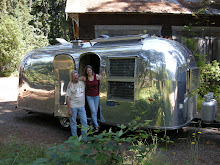
The contrast was staggering. After miles and miles of neat as a pin Nebraska farms and corn fields, just south of the Nebraska-South Dakota border we came across the town of White Clay. With a population of 22, this town sells an average of 12,000 CANS OF BEER A DAY. Not because the locals are big fans of Budweiser, but because at 9am when we pulled through, the Indians of the Pine Ridge Indian Reservation whose borders begin another 500 yards down the road, were lined up with their brown bags, and already heavily into the days drinking. This city is a crime, and the citizens of the Pine Ridge Reservation are not the criminals, they are the victims.
We were on our way to visit Alex and Debra White Plume, Lakota Indians that have been trying to grow Industrial Hemp on their property in the Sovereign Nation of the Oglala Sioux since 2000. As we pulled through the dusty, dirty and utterly depressing town of White Clay we wondered what we had got ourselves into. After years of protests, and efforts to eliminate this blight from the face of the earth and the profiteering that allows its businesses to extract from the blood of the Indian Nation it borders, White Clay still exists. This is a travesty beyond excuse, and the people and the government of Nebraska should be ashamed.
Having been to a number of Indian Reservations throughout the country, particularly in the Northwest, and Desert Southwest, I was not surprised by what I saw. For so many of us, the image of the “drunk Indian” is all we know about life on the reservation. But like so many clichés, there is so much more here than meets the eye. Later in the day we would talk to Alex about the problems with alcohol on the reservation, but first we would get to drive across the Pine Ridge Reservation that is just a small part of the Indian Nation, and see that there is as much diversity here as anywhere in this country.
The town of Pine Ridge was not much to look at, and we soon found ourselves on the edge of town where we saw a member of the Tribal Police struggling to change his own flat tire. I wondered how many policemen do that. As we passed through Wounded Knee, we came across a couple of young girls who couldn't have been more than 8 or 9 years old, attempting to herd a group of horses running wild across the road. We slowed to a crawl and realized while observing them that this was just a part of their everyday life. The horse, as it was 150 years ago, is still an integral part of life on the reservation.
This was only the first of a series of experiences that helped teach us about the basic and intrinsic differences between the day to day lives of the Indians on the Reservation and our own. As we spent the day with Alex and Debra, we continued to learn about these differences, and they range from the melodic and enchanting language that they speak, to the way they think about the natural world.
When they spoke about the past, what we call “history” (because I think it gives us a good way out of any guilt by association) it was as if it only happened yesterday. When Debra spoke of how their people ended up on this particular piece of land, she said “this is how WE got here”, not “that is how the Indians ended up at Pine Ridge”. It was in the first person, it was alive, and it was intense. Alex and Debra let us into their home, rebuilt after a devastating fire that destroyed not only everything they owned, but also years of research and documentation for the projects and causes they have heralded. They also let us into their lives by sharing with us the struggles they have been through and those that lie ahead.
Over the next few hours, through a combination of words and pictures, some in English, some in Lakota, we would learn many things about the ongoing battle to “Owe Aku”, or “Bring Back the Way” in the language of the Lakota.
Next: Alex White Plume




No comments:
Post a Comment